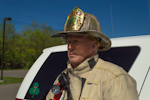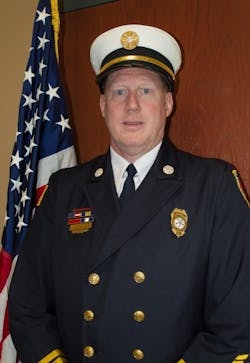In the fire/EMS service, we are learning that mental health conditions occur at higher rates for first responders compared to the general public. We are routinely exposed to physical and emotional trauma, sometimes on a daily basis. Leadership must be aware of this emotional trauma, the effects on their membership and intervention methods to reduce the stress associated with it.
Recognizing signs and symptoms
Most people in this world do not see what we first responders see, and they cannot relate to what we feel after a tragic call—the change of mood, the feeling of depression, the attempts to file away those images from that traumatic event in hopes they never return. It is not surprising then that for many firefighters, a traumatic incident or the accumulation of witnessing trauma over time can have a significant impact on their mental wellbeing.
You may notice that one of your members is struggling from one of those calls, or a series of stressful bad calls that just won’t leave their minds. You might have overheard them discuss their sleepless nights, their nightmares and their increased anxiety. Or it might be the opposite; they may be isolating themselves or shutting down in response to the grief or sadness.
As a leader of your crew or organization, you must recognize the severity of these critical incidents and the stress that is felt by each of your members. You also need to be aware of the signs and symptoms that come from traumatic emotional stress. It is important to be able to recognize the signs that someone may need help. Many in the fire service try to hide or downplay what they are experiencing, perhaps out of fear of how others might perceive them, or because the department’s culture doesn’t foster open communication, or maybe because of lingering misconceptions about mental health.
Some of the more common signs that someone is struggling include:
- Avoiding people, places or activities that could remind them of the traumatic event(s)
- Trouble sleeping or nightmares
- Trouble concentrating as their mind wanders easily
- Overwhelming guilt or shame
- Recurring distressing memories of an event or series of events
- Irritability with angry outbursts
- Drinking or using prescription medications too much
Unfortunately, I know all too well what it is like to walk in their shoes. I have recently recovered from a state of depression caused by a major incident that triggered a landslide of many of those traumatic events that had been filed away.
Mental health issues are real, and no one should feel embarrassed or ashamed to ask for help. This is a concept we need to embrace throughout the fire/EMS service culture. Train your officers and firefighters on what to look for and teach them the avenues that are already in place for those who need help.
If you are the one struggling from emotional trauma, don’t be afraid of professional help. Many responders won’t seek the help of a professional because of the stigma that it shows weakness. That is so far from the truth. There are some things that we can’t fix by ourselves, and the way your mind works is one of them. It is important as first responders that we recognize when we truly need help. The treatment can only start with you standing up to say that you need help and that you want your life back.
8 tips and takeaways
From one leader to another, here are some tips to help guide you when you recognize someone is struggling from the effects of emotional trauma:
- First and foremost, be compassionate. We use compassion on every call. Talking to someone who is struggling with emotional trauma doesn’t require any special training. Let the person know you are there for them and that they are important to you.
- Notice what you are observing that creates concern and have a conversation with them. Explain to them the signs and symptoms that you have noticed and that you want to help. A conversation away from the firehouse or ambulance base might be more comfortable and might allow one to open up.
- Periodically check in with the individual. Volunteer firefighters can hide by just staying home and struggling in silence.
- Avoid asking questions that prompt limited or vague answers. For instance, when I ask my firefighters, “How are you doing?” 99.9 percent of the time the response will be, “I’m okay, chief.” Instead, phrase the question in a way that will encourage a more detailed and open response, such as: “That child drowning call will stress me for a while as she was the similar age as my daughter. How is this going to affect you?”
- Listen actively. When you get someone talking about the stress they are feeling, do not interrupt them. Just keep listening and let them open up.
- Do not try to compare one of your prior traumatic events in an attempt to lessen their traumatic event.
- All conversations must be in confidence. The only way an individual in crisis is going to open up is trusting that you will keep what they say in confidence. The exception is if they express that they are planning to commit suicide, at which point follow department protocol to get them through the crisis point.
- Only offer help to your ability, then suggest options for additional help, such as a local peer support team, a seasoned veteran or behavioral health specialist.
A simple “I will listen when you are ready” can go a long way. Sometimes you will need to give the person time to heal by themselves and then be there for them when they are ready to talk or show emotion.
Those in the leadership role need to be true leaders and recognize the signs when one of their own is struggling with behavioral health issues. They must also clearly provide avenues and programs for their first responders to follow when they find themselves struggling with these traumatic and violent events. Simply offering an employee assistance program (EAP) to your members is not enough. Build a support system of peer support teams, area chaplains, stress debriefing teams and other medical professional resources. Leaders need to know the advantages and limitations of each resource, as well as how firefighters might confidentially access these resources.
Being a leader
When dealing with post-traumatic stress, you need to understand post-traumatic growth, defined as a positive change experienced as a result of the struggle with a major traumatic event. Learn to turn the negative into a positive and how to grow from the incident. Post-traumatic growth is about surviving those traumatic events and coming out a better person. For me, writing this article and teaching behavioral health classes so firefighters don’t have to struggle with the things we see is my post-traumatic growth. I want to take what I have lived and learned to help others survive in this fire/EMS service.
As a leader it is also important that we prioritize taking care of ourselves. Have a person in your life who understands this service and one who you can lean on when you feel overwhelmed or stressed so you can confidently continue your leadership role with your organization. When dealing with behavioral health, one must be knowledgeable and understand the difference between burnout, anxiety, depression and post-traumatic stress. It is important that we prioritize taking care of our own members and ensure their mental wellness and emotional health.
Life Happens—A Fire Service Approach to Behavioral Health and Wellness
Background
Life Circumstances Assistance Policy
Conclusion

Jared Meeker
Jared Meeker is a 30+ year fire service veteran currently serving as a fire chief in a combination fire department in upstate New York. His passion for the fire service includes teaching incident command skills to aspiring fire officers and career survival skills to all first responders.






